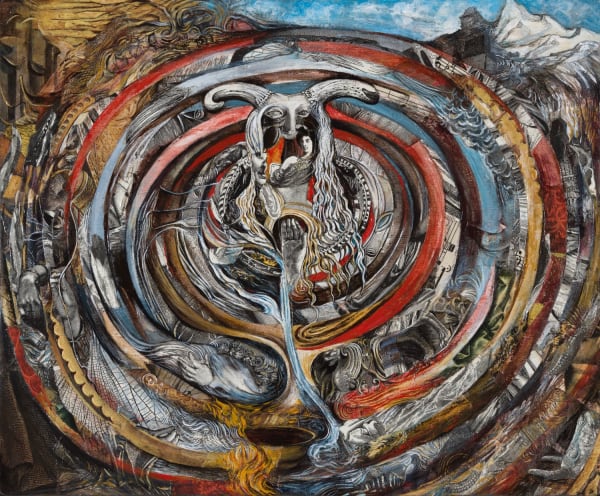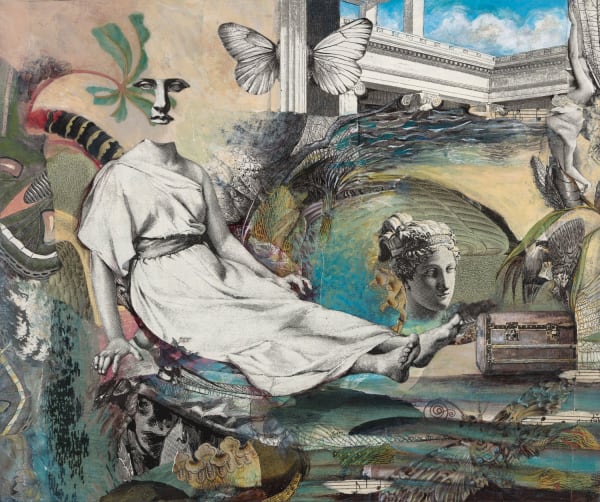GEORGINA COBURN: Women in Greek Mythology | Three New Paintings
Following her series of six paintings featured in Kilmorack Gallery’s 10” x 12” exhibition, Coburn explores three new heroines from Greek mythology. Athena, goddess of wisdom and war, Atalanta, follower of Artemis and Eurydice escaping the underworld.
'After my series of six collage and mixed media works inspired by Women in Greek Mythology, I have been exploring three more heroines.
Athena, goddess of war and wisdom, is a fascinating, contradictory figure of thought and action. Born from her father Zeus’s forehead and represented symbolically by an owl, Athena is associated with intellect and the element of air. This figure of Athena reimagined, suggests a different kind of power to wielding a sword or spear. With the advent of 21st Century drones and AI technology, war has become almost an unconscious act, where killing is like gaming, simply pushing a button, with no accountability or actual human contact. Within this work I have also been thinking about ideas of defence and justice, enacted in current wars raging across the world. In such times, having a creative or imaginative space as a still point of reflection becomes an imperative.
According to Greek mythology, Atalanta was left on a hillside to die by her father for not being a male child. Nursed by a bear and raised by hunters, she was a mortal woman, a skilled hunter and devoted follower of Artemis. Here she appears ceremonially adorned and elevated, despite losing the race to Hippomenes, aided by Aphrodite’s golden apples, cast down to thwart her winning pace and ensure that she marries him. Hippomenes and Atalanta were later transformed into lions. My image of Atalanta and her attendant animals isn’t an attempt to literally illustrate her story. Like the collage process, the image is more about triggering threads of association. Atalanta holds apple and spear purposefully, in full possession of herself. She is an ancient, fated character but also a contemporary one, standing in a burning wilderness. Like an archetypal figure in a tarot deck, she confronts us with the possibility of resistance through self-determination.
My image of Eurydice changes the story completely. She is hoisting herself up Indiana Jones style from the underworld, rather than being trapped by Orpheus disobeying Hades, looking back in doubt of her following him out of the underworld. Hanging by a rope, Eurydice looks back on her relationship with Orpheus, both figures turned to stone and crumbling in a cavernous, volcanic space, not unlike our unconscious selves. It is not a space for the dead, but one for reimagining life and she is certainly not helpless. In this moment of reflection, Eurydice has the agency, resilience and skill to manage her escape.'
Georgina Coburn











